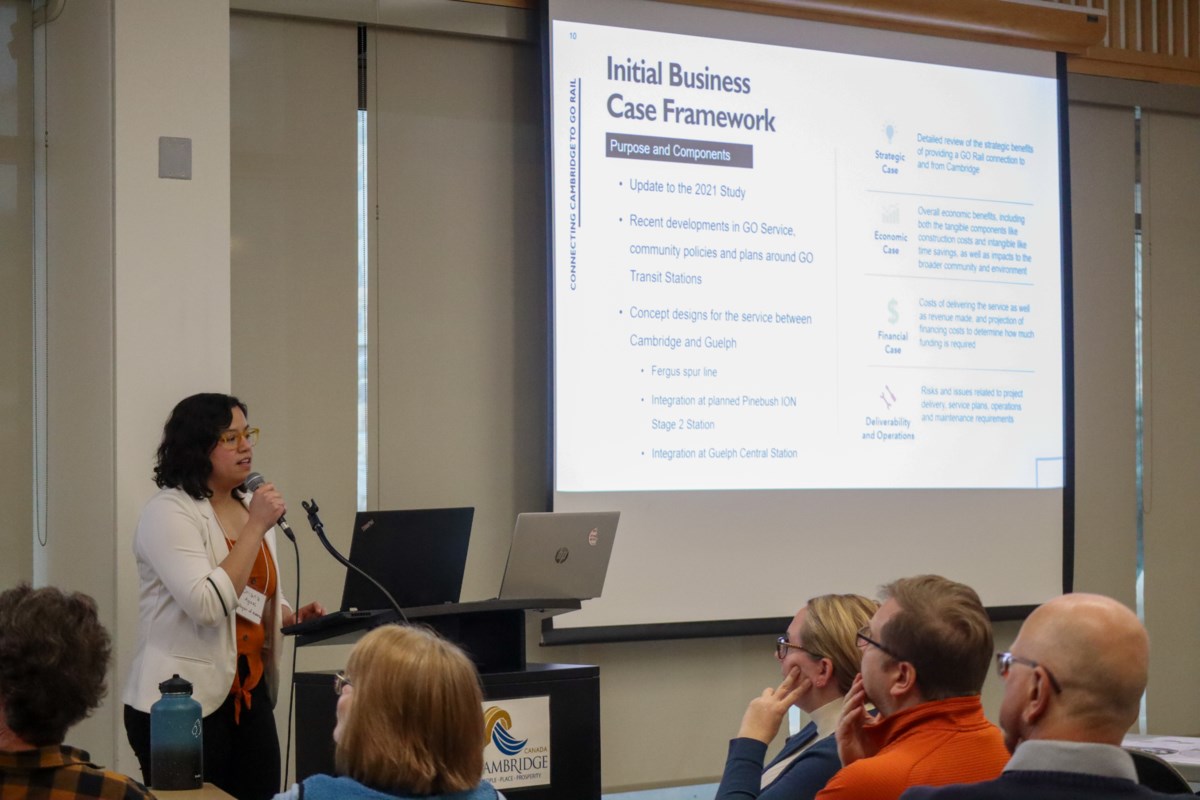I'd like to see a traffic count for the 24 124. Spending $460M to correct a congestion problem that doesn't exist makes no sense.
If one is projecting growth/demand between Guelph and Cambridge, let's see how long it will take to fill up the existing road, and how well a bus solution might solve that with lower cost. Especially a bus solution that addresses first/last mile and gives multiple transfer free routing options at both ends.
Cambridge is a town that has precious little experience with urban transportation and certainly none with higher order transit. Their council is remarkably unsophisticated in this area. Wanting a GO service here really is a Monorail mentality.
Looking at this from the other end - suppose $500M in transportation funding suddenly became available. How would that money be best spent to improve transportation options for Cambridge? I'm pretty confident that the G+G connection would not be at priority #1. I even wonder what an extension to the Milton service might cost.... probably some doubletracking and signalling on the CP line through Campbellville, but probably not $500M.
And yes, numerically, I do believe that the number of Cambridge transit riders trying to reach the GTA far outweighs the number that need to get to Guelph. So meeting that need on the Milton line is indeed a better use of the funding, if the funds actually existed.
- Paul
I see what your saying here, but I offer two counterpoints. Let me first say though that the usual contention of “better ways to spend the money” is not a great basis, because time and time again we see in Ontario that money doesn’t go elsewhere, it just dissapears if not spent as allocated. But I’ll talk about the places that money could go anyway later to cover my bases.
Anywho:
1. This is low hanging fruit. Rail corridors are “use it or lose it” type situations. Rail may not be warranted, but it is available. We wouldn’t
build a new corridor for G-C certainly, but the opportunity cost of a rail line in the long term over a road or bus is huge- it will be able to handle any demand, while a road or bus might not. Similarly, could we not say that GO at its inception was an excessive way to deal with mounting transportation demand? Only now are we getting around to truly realizing the capacity potential of say, the Lakeshore lines. It’s not apples to apples, but it’s the same philosophy of playing the cards we are dealt.
2. This matters because you are right— there is
not an immediate
need for this project. But that is the nature of an economic investment; you create new potential and capacity for growth, rather than trying to facilitate growth that is occurring/will occur anyway.
On your point of ‘the best use of money’ which comes up a lot… Truthfully, I don’t think $500M could be better spent even if it
didn’t dissapear; neither WR not Guelph have a pre-existing BRT plan to dump the money into like RapidTO (the usual way people suggest delivering more widespread benefits), it’s not enough for iON phase 2 (and that is solely an economic project- the transportation benefits will be null) and it is probably not enough for Milton-Cambridge, which has less utility and worse service baked in. You aren’t even better serving Cambridge-Toronto commutes either, your just avoiding the second-strongest destination en route.
Ironically we have spent so much time trying to catch up with our infrastructure deficit, that anything that tries to create new linkages is met with skepticism. Transportation and development is a chicken-and-egg problem, and we have been stuck on the chicken that the “egg” is unrecognizable. Whether there is net new growth is tbd; but, what is obvious is that the growth which is coming
anyway to KWC and Guelph will now want to concentrate around this line.
In brief, considering that integrating KWC-G is a good policy direction, AND that the infrastructure alternatives are inferior, more expensive, and further off, then I think the scheme is a net economic benefit. KWC and Guelph aren’t one region, so they probably won’t be able do this on their own, even if the need arises, in 20 years or what have you. Furthermore, It’s a precursor to how things should be happening with disused corridors and ‘missing links’ once Metrolinx is done playing catch-up across the GGH. This isn’t Sheppard- it is certainly not excessively big in scope that it needs massive uptake on day 1 to justify it.





